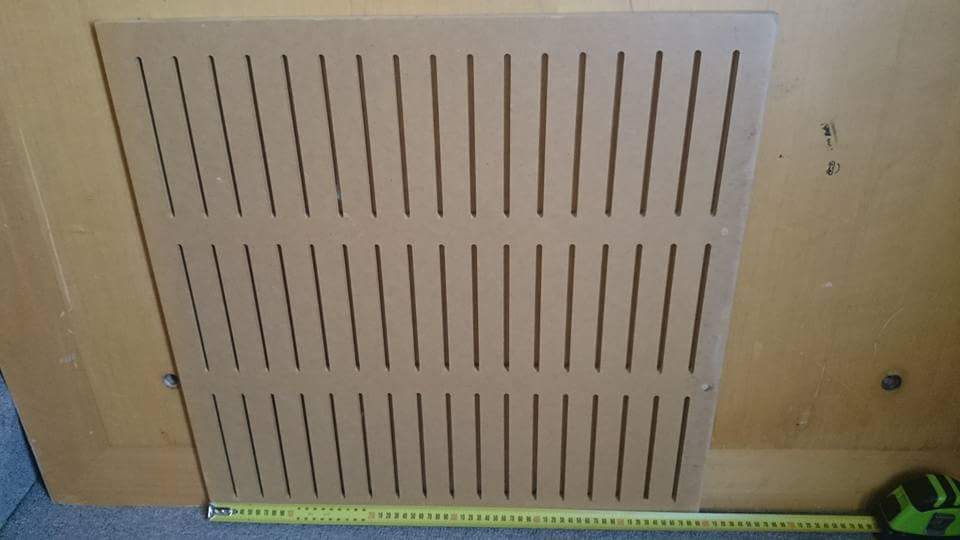I picked up some cheap MDF perforated (slits) board, some had a little bit of absorber behind them. Would they be useful to put up against the walls as room treatment? I would add more absorber behind them, mostly they would be going where no 1st reflection treatments are, or behind the desk and speakers as an aesthetic item.
I am renting, so no permanent fixtures here. Room is 3.8m x 5m with little 1.8, x 1.5m open "wardrobe" on the back wall corner.
Topic Tags
Comments
I would turn the MDF side to the wall if you are going to use it
I would turn the MDF side to the wall if you are going to use it at first reflection points. The reflective MDF will gain you nothing in this respect where you need absorption of indirect reflections.
But no matter where they are placed...with no information giving the room it needs absorption more than likely and not added hard surfaces.
The boards look like this : They won't be used at first ref
The boards look like this :
They won't be used at first reflection, just on areas where there would normally be flat wall anyway. I'd add a decent amount of frame to put some absorbing material behind.
I have some mineral wool batts straddling the front corners, and entire back wall with open cell foam mattress around 5 inch thick. These will probably be replaced later on with mineral wool block panels. They work well enough for now.
Rennie, post: 448165, member: 50188 wrote: They work well enough
Rennie, post: 448165, member: 50188 wrote: They work well enough for now.
Can I ask, what is it "working well" at doing?
Have you had a chance to measure your room acoustically to find out what your problem areas are?
I'm not being sarcastic, actually I'm in the middle of treating my mixing space as well...
My concern with using things like 5" of mattress padding would be that while you may be taming a few lower frequencies to a certain degree, you'd also be affecting higher frequencies to a much greater degree and maybe these are frequencies that don't need treatment.
I'm no acoustics expert, but I would follow with Marco's (pcrecord ) and Brien's (@Brien Holcombe ) theory that its best to know what your treatment methods will affect before you just start putting the various treatments up in your room.
That being said, if you are getting good mix translation to other systems and spaces, then I'm certainly not one to question your methods. ;)
-d.
To be honest I haven't done any recording or music making worth
To be honest I haven't done any recording or music making worth mentioning. Mostly just been using it for listening at the current time, despite having equipment.
I used foam mattresses, because at the time they were cheap and colourful. They do suck up high frequencies a bit, which is why they will be replaced later. But it does stop rear reflections for the most part. I haven't measured, only played around with sine wave generator to find out bass peaks and nulls.
The mineral wool batts help a lot more in the bass than foam.
The reason I thought I'd try these panels, is that with the correct absorber, they may help with bass, but not suck up all other frequencies as well due to the hard surface.



It depends what kind and how thick the absorbing material is. Yo
It depends what kind and how thick the absorbing material is.
You see before you put anything in a recording environnement, it's good to know what it will do.
Less than an inch can help flutter echo but won't affect any lowend. If you put a distance between the board and the wall the effect will be different..
Of course trying won't hurt but to be sure it helps, it takes a very good set of ears or measuring Tools ;)